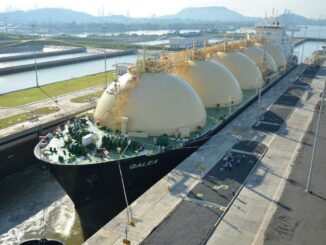
Officially announced in Vancouver by Natural Resources Minister Jonathan Wilkinson, the 52-page document outlines the government’s plan for Canada “to become a global supplier of choice for critical minerals and the clean digital technologies they enable.”
Out of a list of 31 critical minerals in Canada, the strategy prioritizes six for their economic growth potential and status as inputs for supply chains: lithium, graphite, nickel, cobalt, copper, and rare earth elements.
It also focuses on five segments in the critical mineral value chain: geoscience and exploration; mineral extraction; intermediate processing; advanced manufacturing; and recycling.
To build competitive value chains in Canada, the stages of the industrial process must be integrated, and all can be built domestically so that mineral resources aren’t just exported for processing before they’re re-imported as final products, the strategy says.
Certain value chains with the highest potential for such integration include clean technologies like zero-emission vehicles, communication technologies and advanced manufacturing like permanent magnets. Those chains also have high potential for economic growth, the strategy says, though government funding would help develop the critical minerals needed for their end products.
The document doesn’t identify any new funding streams that weren’t already set out in Budget 2022.
The strategy is guided by six areas of focus: driving research, innovation, and exploration; accelerating project development; building sustainable infrastructure; advancing reconciliation with Indigenous peoples; growing a diverse workforce and prosperous communities; and strengthening global leadership and security.
In seeking to drive innovation and exploration, C$79.2 million will be earmarked for public geoscience and exploration to help identify and assess mineral deposits. Under this focus, the new 30% Critical Mineral Exploration Tax Credit for targeted critical minerals will be introduced, and C$47.7 million allocated for upstream critical mineral research and development through research labs. Another C$144.4 million is set for further R&D, and the use of technologies to support critical mineral development for upstream and midstream segments of the value chain.
To accelerate project development, the strategy identifies the need to streamline project assessments and permits, as well as strategic investments to unlock potential in mineral-rich regions.
To that end, three main funding initiatives identified in the 2021 and 2022 federal budgets will be accessed: the C$1.5 billion critical minerals envelope under the Strategic Innovation Fund (SIF) to support advanced manufacturing, processing and recycling; C$40 million to support northern regulatory processes in project reviewing and permitting; and C$21.5 million for the Critical Minerals Centre of Excellence to develop policies to assist project developers in navigating regulatory processes.
The SIF will be among the “most significant” direct funding avenues, the strategy notes, with the fund helping to build critical mineral value chains where prefabrication and manufacturing activities are done domestically, while supporting projects that decrease reliance on foreign critical mineral inputs. SIF funding will begin in 2024-2025 and last for six years.
The focus on building sustainable infrastructure aims to address the challenges of developing critical mineral projects in remote or underdeveloped areas. The strategy states that the costs of building infrastructure in those areas discourage investment and “hinder the socio-economic development” of communities open to mineral development. And in northern regions, underdeveloped infrastructure poses challenges for industrial development and access to Canadian and international markets. A total of C$1.5 billion will be allocated over seven years starting in 2023-2024 for such infrastructure development, particularly for priority deposits.
In addition, the strategy says that since off-grid mining operations in remote areas depend heavily on GHG emitting power sources, strategic investments in green energy infrastructure would improve the environmental performance and sustainability of critical mineral projects by integrating them into the value chain. Such investments could spur competitiveness and cut energy costs.
The document didn’t specify how the infrastructure funds would be disbursed or accessed.In seeking to advance reconciliation with Indigenous peoples, the strategy acknowledges in the fourth focus that Indigenous peoples are the rights and title holders to lands where mineral resources are located. Engaging Indigenous peoples in critical mineral development will seek to spur Indigenous participation in projects while respecting Aboriginal and treaty rights, advance economic reconciliation and support safe communities throughout the critical mineral project lifecycle.
For this focus, at least C$25 million will be allocated for Indigenous participation and early engagement in the strategy, out of C$103.4 million over five years starting in 2022-2023 through the Indigenous Natural Resource Partnerships Program. That program is accessible to Communities, businesses and organizations.
Actions under the strategy will comply with the Canadian’s government’s implementation of the United Nations Declaration on the Rights of Indigenous Peoples Act, the document states.
The fifth focus of growing a diverse workforce and prosperous communities recognizes that up to 113,000 new workers will be needed in the mining sector by 2030 to meet demand and replace workers leaving the sector. And as the critical minerals industry further develops, demand will ramp up for a diverse set of skills needed for geoscience, AI, computer technology and automotive assembly.
Several federal training initiatives will help build up those skills, including through the Sectoral Workforce Solutions Program, the Indigenous Skills and Employment Training Program, the Skills and Partnership Fund and the Youth Employment and Skills Strategy.
Diversity and inclusion will be given priority in those efforts, with the federal government supporting the training and retention of women, youth, Indigenous peoples and other equity-seeking groups.
The sixth and final focus seeks to ensure international engagement on critical minerals aligns with the federal government’s strategic objectives and its Indo-Pacific Strategy.
It will also further integrate the government’s Responsible Business Conduct Strategy, launched in April 2022 with multilateral agreements; and leverage initiatives like Towards Sustainable Mining to encourage environmentally friendly mining practices and international collaboration to prevent products from conflict, child labour and “environmentally poor” operations from entering supply chains.
Budget 2022 allocates C$70 million over eight years starting in 2022-2023 for international partnerships to promote Canadian mining leadership, including promoting ESG standards and supporting multilateral critical mineral commitments.



